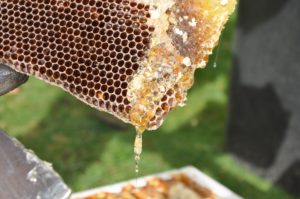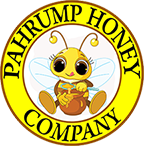 Any, and every, home emergency kit should contain at least a weeks supply of Bee Pollen. Kept in the freezer, Pollen will last for many years. During an emergency simply remove the Pollen from the freezer and take it with you.
Any, and every, home emergency kit should contain at least a weeks supply of Bee Pollen. Kept in the freezer, Pollen will last for many years. During an emergency simply remove the Pollen from the freezer and take it with you. How honey is made
Made Naturally by Nature
From Bee
Honey starts as flower nectar collected by bees, which gets broken down into simple sugars stored inside the honeycomb. The design of the honeycomb and constant fanning of the bees’ wings causes evaporation, creating sweet liquid honey. Honey’s color and flavor varies based on the nectar collected by the bees. For example, honey made from orange blossom nectar might be light in color, whereas honey from avocado or wildflowers might have a dark amber color.
To Hive
On average, a hive will produce about 65 pounds of surplus honey each year2. Beekeepers harvest it by collecting the honeycomb frames and scraping off the wax cap that bees make to seal off honey in each cell. Once the caps are removed, the frames are placed in an extractor, a centrifuge that spins the frames, forcing honey out of the comb.
To Home
After the honey is extracted, it’s strained to remove any remaining wax and other particles. Some beekeepers and bottlers might heat the honey to make this process easier, but at Pahrump Honey we NEVER heat our Honey. that doesn’t alter the liquid’s natural composition.
After straining, it’s time to bottle, label and bring it to you. It doesn’t matter if the container is glass or plastic, At Pahrump Honey we make “pure honey,” nothing was added from bee to hive to bottle.
Source: 2 Abbott, Charles Nash (1881), British Bee Journal & Bee-keepers Adviser, Volume 31.
VIDEO: Honey Isn’t Just Sugar
VIDEO: Be the Bee – National Honey Board
To illustrate the natural process of honey production, we have created a virtual reality (VR) video that shows the full hive-to-table journey. The video takes viewers on a flight through fields of flowers, into a bee hive all from the bee’s point of view, and around a commercial honey bottling facility, (At Pahrump Honey we bottle by hand). The video also explains not only how honey is made, but the important role bees play in our food supply and other bee facts, such as how one in every three bites of food can be attributed to pollination![1]
